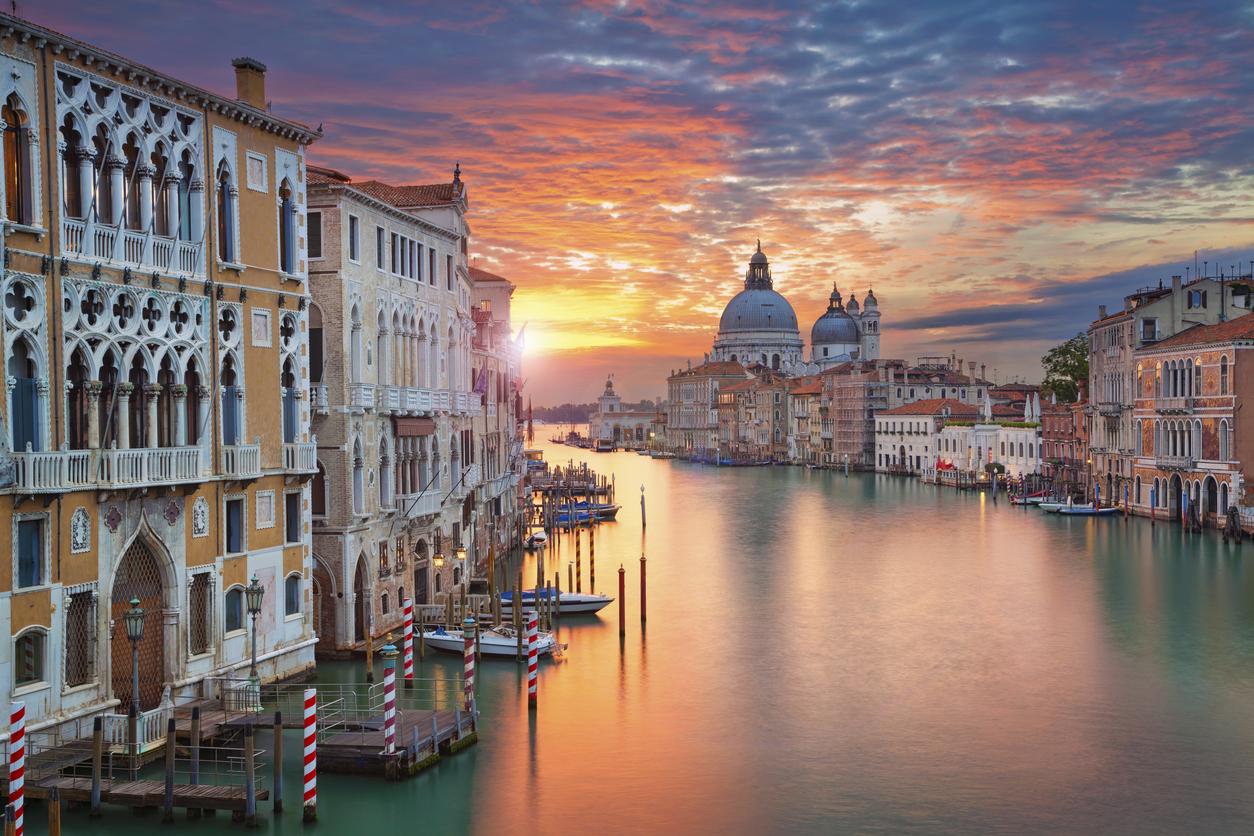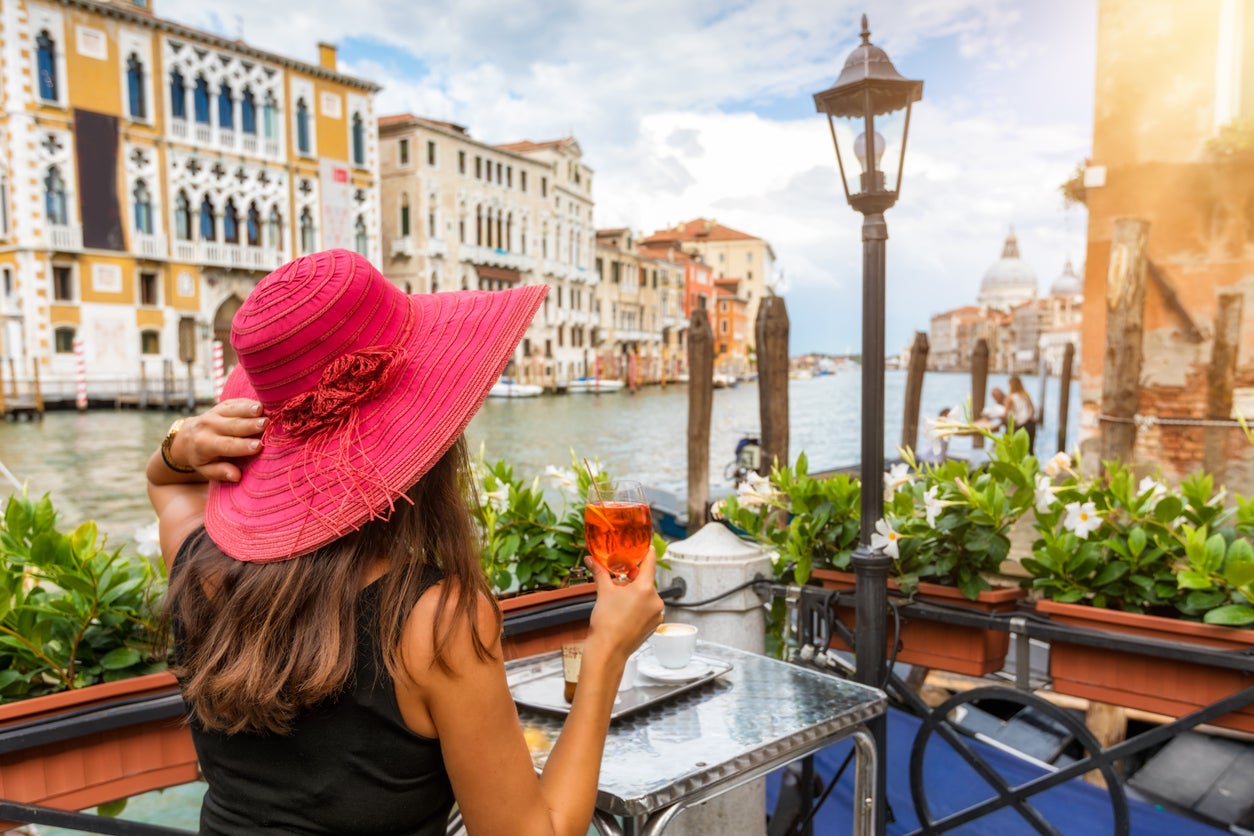The Independent's journalism is supported by our readers. When you purchase through links on our site, we may earn commission.
How to visit Venice without leaving home
Armchair Travel: Experience the Italian city from where you are

Under coronavirus lockdown, La Serenissima – the most serene – has become just that. The canals have fallen silent, the water has stilled, and the souvenir stands are now shuttered. Venice has a melancholic beauty these days, seemingly subdued but gorgeous nevertheless.
With fleets of planes grounded and international travel at a standstill, seeing Venice in the flesh will have to wait. As an alternative, however, there is virtual travel, thanks to the internet.
Live webcam feeds give views of the startlingly quiet Grand Canal, while Google’s tours and street views provide digital access to the city’s historic attractions. The inexhaustible resource of YouTube is home to Venetian cooking tutorials and concerts from the city’s theatres. Films and literature have immortalised the atmosphere of the city, and Murano glass souvenirs can be perused and purchased from your sofa.
Here’s now to harness these resources for a vicarious visit to the floating city. And no, flooding your bathroom to simulate the lagoon is not necessary.
Read more: Best hotels in Venice
What to do:
Live stream Venice
Gaze upon an empty, silent Venice through the dozens of live webcam feeds accessible through YouTube. The I Love You Venice YouTube channel plays rolling footage from hotels’ CCTV to the accompaniment of vivacious Vivaldi-esque classical music.
Their Rolling Cam Venice video, self proclaimed as the “most beautiful live cam in Venice,” cuts between footage giving a holistic view of the deserted city, from the serene Grand Canal with the occasional chugging vaporetto (water bus) to the sun-lit basin of St Mark’s.
Take a tour
Technology entrepreneurs Geneeo have filmed a 20-minute virtual reality gondola ride through Venice’s canals, which you can watch on YouTube. As you float past St Mark’s Square and under the Bridge of Sighs, drag the video around with your mouse or move your smartphone for 360 degree views. You can swivel right around and watch the stripey-T-shirted gondolier rowing rhythmically and listen to his lilting commentary. The soft splashes of the water against the hull and occasionally gentle clunks of the oar against the boat get quite hypnotic.
Through Google Arts and Culture, you can satisfy the cultural remit of your virtual visit to Venice. Indoor Google Street View lets you wander through the opulently brocaded 18th century interiors of Ca’ Rezzonico Museum, and take a turn in a richly frescoed room of the Palazzo Fortuny. More in-depth tours explain the history of Murano glass blowing, lead you around the resplendent Doge’s Palace with art historical information, and show you around a squero, a traditional boat yard where gondolas are made.
Finally, get some fresh air with Google Maps’ virtual tours of the city by vaporetto, gondola or on foot. You can easily spend hours getting as happily and hopelessly lost as in real life Venice.
Local flavours
Although your ingredients can’t come fresh from the Rialto Market, you can still use YouTube cooking classes to bring the taste of Venice to you.
All good Venetian dinners start at the bar, with a Spritz and some cicchetti (Venetian finger food). Executive chef Daniele Turco of the Gritti Palace Hotel in Venice demonstrates how to prepare some luxurious assorted cicchetti, but if you find it a little advanced, follow these recipes for Parma ham cicchetti and salmon cicchetti instead. Other classic recipes can be found on Saveur’s website.

To accompany the nibbles, prepare yourself an Aperol Spritz, following the instructions from this Venetian bartender, who ups the ante by mixing the drink while riding a gondola. As the video suggests, you don’t need to be overly precise with your measurements. Just keep tasting it and making necessary alterations until you need to pour another one.
For the main course, look to Russell Norman, London restaurateur and author of Polpo: A Venetian Cookbook (of Sorts). His aesthetically and aurally pleasing cooking videos show how to prepare bigoli in salsa, which is spaghetti with an anchovy sauce, and a risotto with Amarone wine and radicchio.
Alternatively, try these endearing videos of Venetian grandmothers demonstrating how to make asparagus risotto and risi e bisi, which put simply is rice and peas.
Setting the scene
You can turn to a wealth of films, books, and music to experience the more intangible aspects of the city’s character.
Classical music buffs will be thinking of composer Claudio Monteverdi at this point, who produced two of his operatic masterpieces in the city, or Venetian-born Antonio Vivaldi, whose baroque music is paid homage to in many daily concerts in Venice. You can watch a video of Vivaldi’s Gloria performed by an all-female orchestra in Venice. Alternatively, imagine yourself in the city’s La Fenice opera house, which was rebuilt after a fire in 1996, and watch excerpts from operas performed there on their YouTube channel.
It may not have been their intention, but some films and books have captured the atmosphere of the city so vividly that this, and not the plot, becomes the viewers’ lasting memory.
Away from sunny promenades and tangerine-coloured Spritzes, Daphne du Maurier succeeds in distilling the dystopian, disorienting character of Venice into her supernatural thriller, Don’t Look Now. The reader experiences that feeling of unease that creeps up on night time wanderers through Venice’s eerily dark alleys, echoing with footsteps and disembodied voices.
Thomas Mann’s novel Death in Venice, translated into film by Luchino Visconti, portrays another morbid side to the city, mirroring its decadence and decay through the plague that finally kills the protagonist. Both book and film express Venice’s fragile, ephemeral beauty, threatened today by rising tides and, until a few months ago, overtourism. Note, however, that if you are mentally escaping to Venice to switch off from coronavirus for a while, this story is a little too topical and best avoided.
For one of the most poetically piquant descriptions of Venice, read Jan Morris’s book Venice. The pages weigh heavy with curious, witty, and wonderfully described information about the city and the whole book reads like a love letter to Venice.
Bring it home
Before your virtual holiday comes to an end, don’t forget to commemorate it with some Venetian-made souvenirs. The holy trinity of Serenissima souvenirs is Murano glass, a mask, and Burano lace.
Glass artist Alessia Fuga creates glass sculptures and jewellery in her studio on the island of Murano, famous for its glass blowing workshops. She has been recognised as one of the top 40 international beadmakers and her vibrant coloured beads can be purchased on her website.
Masks adorn every souvenir stand in Venice, but most have travelled many air miles to get there. Not so at Ca’ Macana, a workshop that produces masks following original craft techniques, worked by the hands of Venetians themselves. There are traditional styles, such as the plague doctor with the long curved nose, and more whimsical feathered and gilded styles too, all of which can be bought online.
Burano lace, from the eponymous island, is an ancient art kept alive by elderly ladies and a handful of ateliers. The intricate designs are now woven into everything from napkins to bedsheets, such as in the boutique of Martina Vidal. Drop her an email if your browsing turns to buying on her website.
Anything else?
After disastrous flooding and now coronavirus, Venice has reached a critical point in its long history, which may transpire to be a moment for radical change.
The dearth of tourists (in person anyway), has shone a harsh light on Venice’s economic mono-dependence on tourism. Questions which many Venetians feel should have been addressed long ago may now actually be considered, such as the environmental impact of cruise ships in the lagoon or the extortionate rent prices for residents.
If you want to explore this other, socially conscious side of the city, watch DW’s documentary about the threat of mass tourism and the dire housing situation in Venice.
Finally, you can’t leave Venice, virtually or otherwise, without learning a local phrase. Particularly apt in this moment might be the cry of “duri i banchi”, which translates as something like “stay strong!”
Join our commenting forum
Join thought-provoking conversations, follow other Independent readers and see their replies
Comments